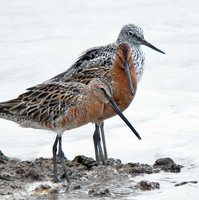|
| Query: bird | Result: 839th of 32675 | |
Mangoverde World Bird Guide Photo Page: Asian Dowitcher Limnodromus semipalmatus

| Resolution: 638x640
File Size: 82194 Bytes
Date: 2005:05:12 10:10:54
Camera: Finecam SL400R (KYOCERA)
F number: f/2.8
Exposure: 10/1250 sec
Focal Length: 131/10
Upload Date: 2008:03:29 11:16:02
|
|
|

